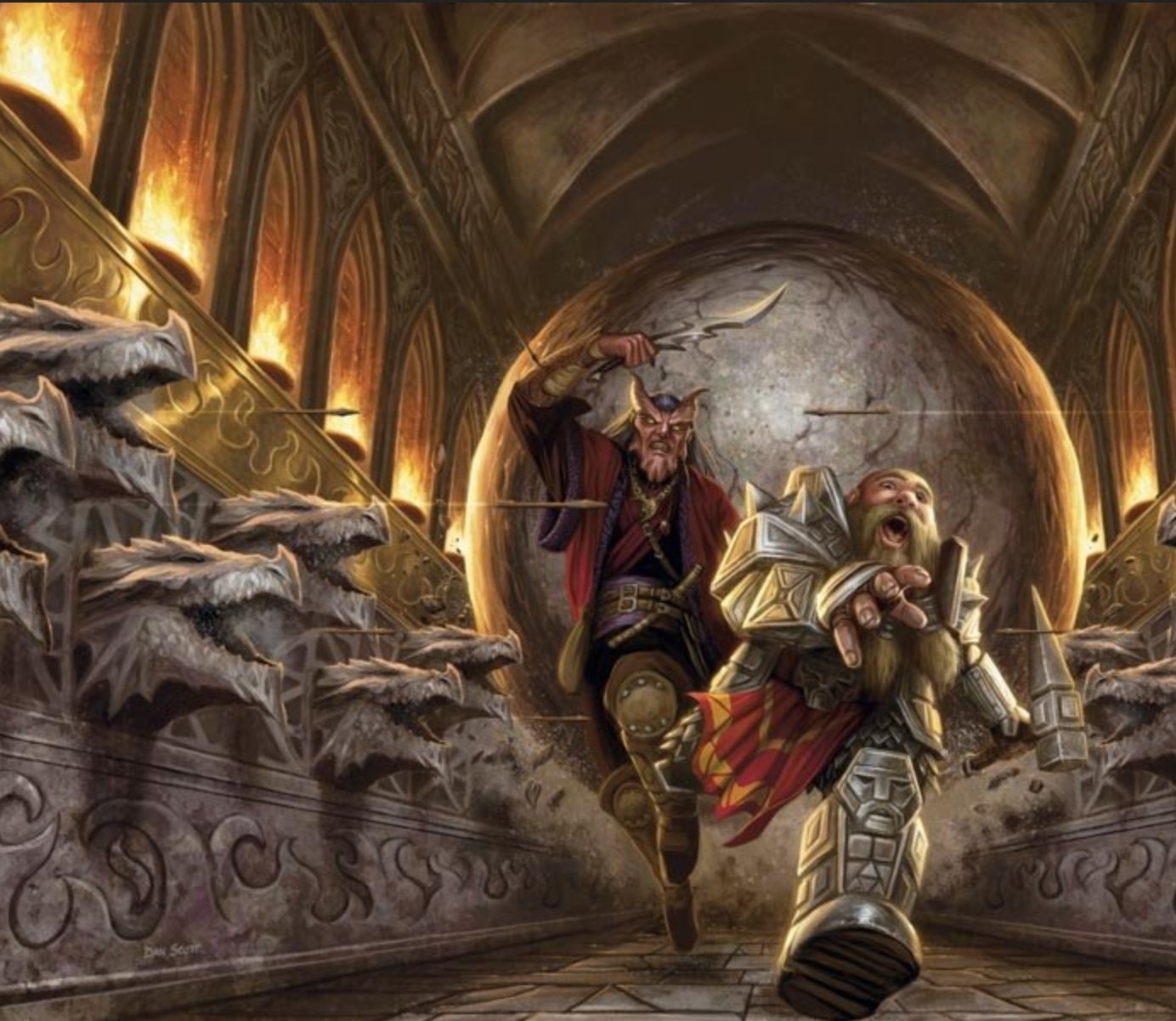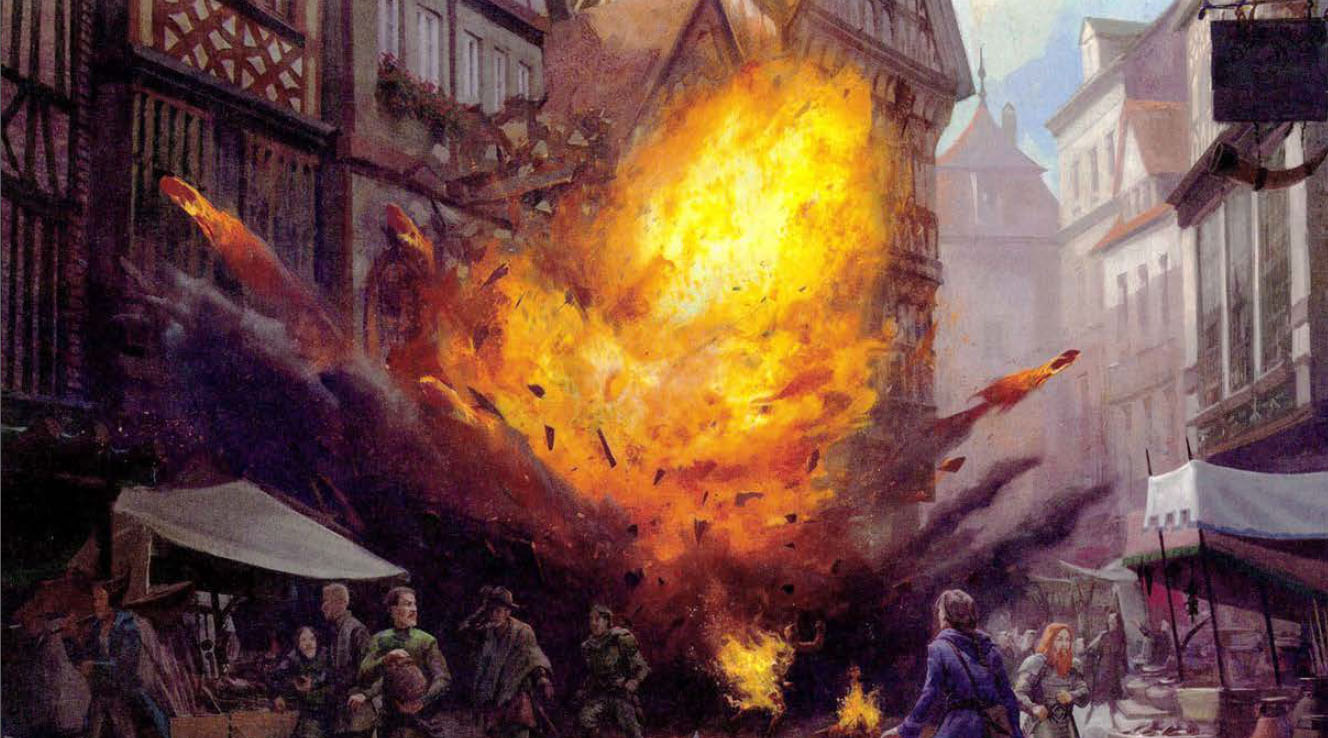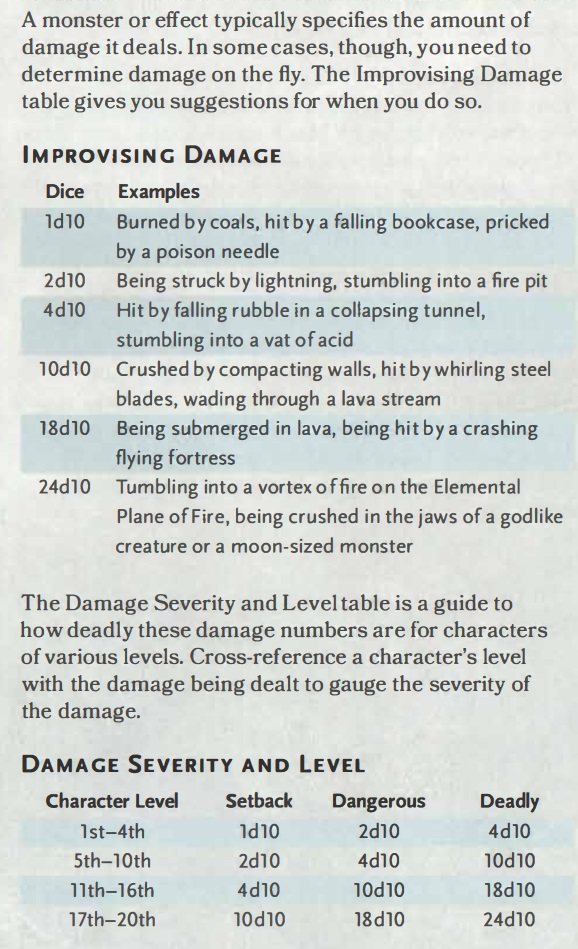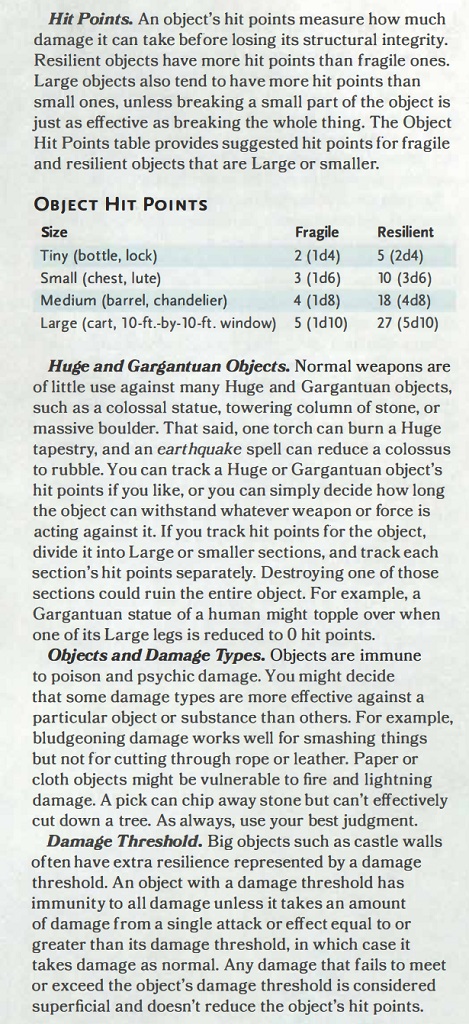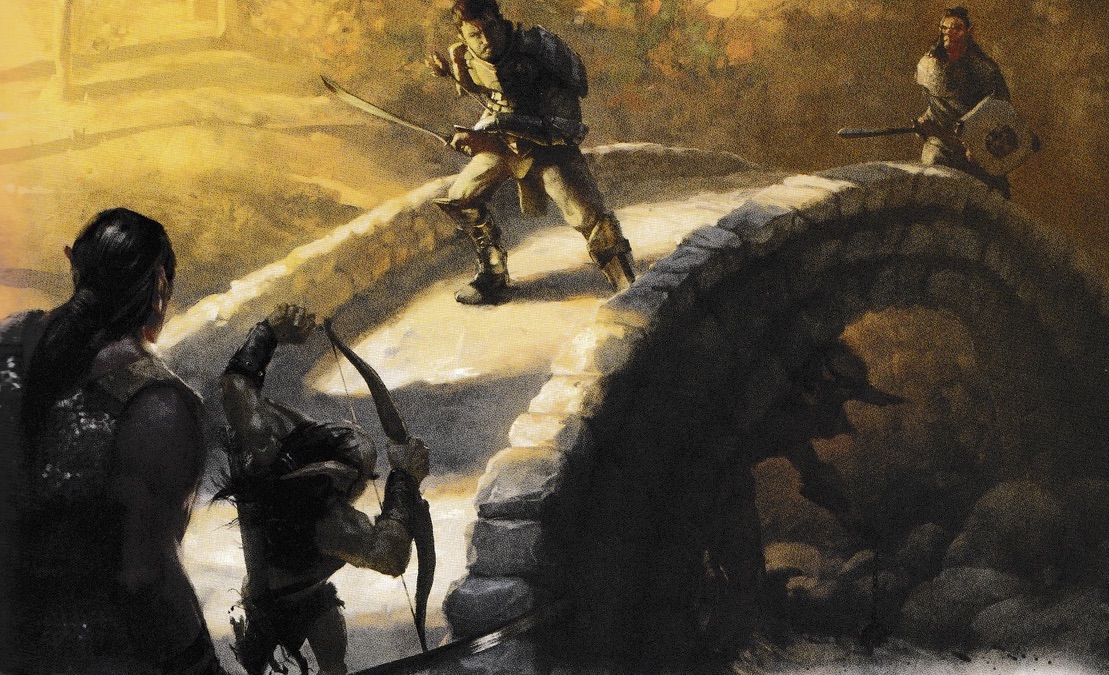D&D Has Rules For That Too?! – Five More Rules You Didn’t Know Were In The Game
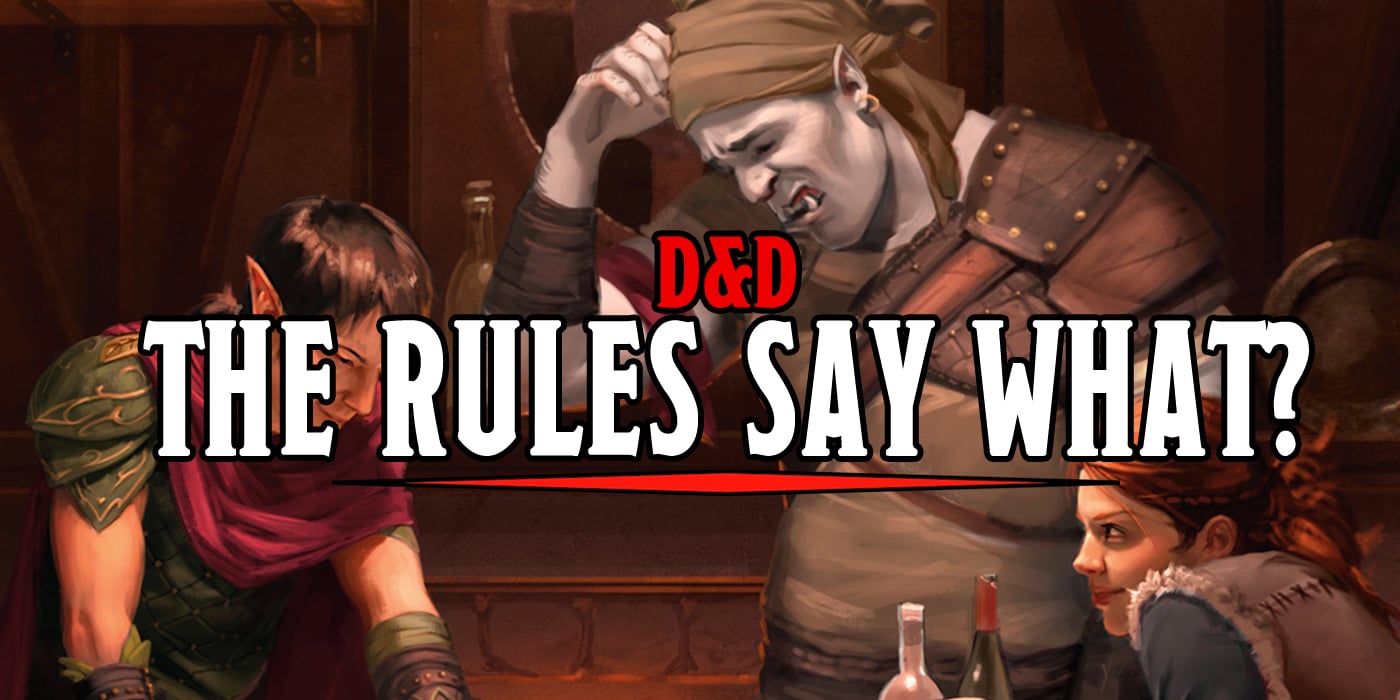
The odds are good that if you need to do something weird that you don’t think D&D has a rule for, it’s somewhere in the Dungeon Master’s Guide.
One of the running jokes of 5th Edition D&D is how the Dungeon Master’s Guide has rules for everything, but nobod,y knows because nobody ever reads the DMG outside of the table where it talks about what Magic Items are and how many you can have at once (more than you think but less than you want), or how the Oathbreaker Paladin works because you want to play a Paladin but like, what if it was an Anti-Paladin. And it might be true, because there are many strange rules hidden inside the DMG, from things like stat rolls not being pass/fail to climb on bigger creatures to using alternate stats for skill checks–there are many ways to play D&D.
The real kicker is, many of these rules aren’t even optional variants but just straight-up rules that are not really stressed because they don’t come up on a typical adventure. With all that in mind, we’re jumping inside the DMG to find more rules you didn’t know were in D&D.
Degrees of Success/Failure
This is one of the most overlooked rules in the game. Success in D&D is often treated as a binary situation, you either make the DC or you don’t, and for the most part that’s all the Player’s Handbook has to say about it. But in the DMG, if you check over on page 242 in the Resolution and Consequences section, you’ll find rules for Success at a Cost (which we’ve talked about before), as well as Degrees of Failure on your skill check.
Degrees of Failure
Sometimes a failed ability check has different consequences depending on the degree of failure. For example, a character who fails to disarm a trapped chest might accidentally spring the trap if the check fails by 5 or more, whereas a lesser failure means that the trap wasn’t triggered during the botched disarm attempt. Consider adding similar distinctions to other checks. Perhaps a failed Charisma (Persuasion) check means a queen won’t help, whereas a failure of 5 or more means she throws you in the dungeon for your impudence.
Essentially if you fail a roll, it doesn’t necessarily mean you immediately suffer a consequence; it might just mean you have to try again or take another approach. A failed stealth check might not mean your character is automatically notice–if you fail by only 1 or 2, you might be able to realize you won’t have a way to sneak past the guard patrol. But a 5 or more means you get spotted.
The same can be applied in reverse; you could just as easily say succeeding on a check by 5 or more gets you an extra effect on the skill check. Making a Charisma (Persuasion) check by 5 or more might mean the Queen gives you an extra item on the way.
This is a natural extension of what players do when they roll a 1–you’ve probably done it too, rolled a 1 on a persuasion check and then said “oh I guess I just fart instead” and this rule is just sort of giving you guidelines to judge it by. But speaking of rolling a 1…
Critical Success or Failure on Skill Checks
If you’ve ever played a game of D&D 5th Edition, you’ve come across someone insisting that they automatically succeed because they roll a 20 or automatically fail when they roll a 1. And invariably someone will say “no that’s not how it works, that’s only for attacks. There are no critical successes on skill checks or saving throws” and that’s true, sort of. Rolling a 20 no more guarantees your successful saving throw than a 1 does a failure, but–the DMG has rules for including critical successes and failure effects if you want to use them. Again, this is all from page 242.
Rolling a 20 or a 1 on an ability check or a saving throw doesn’t normally have any special effect. However, you can choose to take such an exceptional roll into account when adjudicating the outcome. It’s up to you to determine how this manifests in the game. An easy approach is to increase the impact of the success or failure. For example, rolling a 1 on a failed attempt to pick a lock might break the thieves’ tools being used, and rolling a 20 on a successful Intelligence (Investigation) check might reveal an extra clue.
You can’t just… Improvise Damage, Can You?
While the rules for D&D cover many situations, sometimes the adventure calls for something that you weren’t expecting. Like the players got caught in a collapsing wall, or they brought the flying fortress down without realizing just how big it was…and you want to know just how much damage they’re going to take. What should you do? Well page 249 of the DMG has you covered under Improvising Damage.
If you have ever sat down and looked at it, you realize that as deadly as the Tarrasque is, according to the rules as written, it doesn’t have any ranged attack, so, technically, a level 1 aarakocra cleric with a lot of time on their hands (or many more) with Sacred Flame will eventually deal enough damage to the Tarrasque to wear it down while carefully staying out of its reach because they can fly and the Tarrasque has only melee attacks listed. You could use the table to figure out some guidelines for how much damage a boulder or giant tree might do when hurled at an airborne target.
This is probably the one you can dig into the most. So we’ll leave it at this: if you want to tweak your monsters or combat encounters, the designers have got your back.
Have Fun Storming The Castle
Have your players ever seen the enemy castle and decided, “what if we just went back and convinced the queen to send some catapults, or we used the ballista that we stole from that pirate airship to attack the castle instead of trying to sneak in” and then you had an existential crisis because not only did you not expect them to make a frontal assault again, you also didn’t expect them to actually have some solid reasoning for it this time?
Good news for you–and especially for all those players who have ever just wanted to round up some soldiers and lay siege. The DMG has rules for attacking castles–you’ll need a couple of different sections, the Damaging Objects section on page 247 and the Siege Equipment section on page 255. Damaging objects is the foundation for the naval combat rules you might find in Ghosts of Saltmarsh, it lists the sample AC for different inanimate objects like stone walls as well as how many hit points something might have–as well as talking about the Damage Threshold, which is the minimum amount of damage you have to deal to represent actually getting through the object, which is why you can’t just hack away at a castle with a sword and expect to eventually breakthrough.
It even helpfully provides you with rules for how a gargantuan object might fall apart piecemeal and says “remember, use your best judgment” when considering if the player can Warhammer down a tree.
The Siege section just lists how much damage ballistae, catapults, and other massive weapons (including cannons) do. If you ever wonder how much damage that pirate ship’s broadside would do if you’re hit, those rules are there. Want to know how far a trebuchet shoots? Page 256 my friend.
Traveling Overland Using Special Movement
In general, when you’re wanting to go across the map and you’re high enough level that you have cool travel spells but none of them are teleports, there inevitably comes a point where a player might say “well yeah but I have phantom steed/expeditious retreat/fly/a flying carpet/a sailboat” and you want to know how far they’ll get. The DMG has rules for how to get where you need to go on page 242. In general, if you want to use something special for movement, consult the following guidelines to translate someone’s special speed into travel rates:
- In 1 minute, you can move a number of feet equal to your speed times 10.
- In 1 hour, you can move a number of miles equal to your speed divided by 10.
- For daily travel, multiply your hourly rate of travel by the number of hours traveled (typically 8 hours).
- For a fast pace, increase the rate of travel by one-third.
- For a slow pace, multiply the rate by two-thirds.
So if you’re Wind Walking, for instance, you gain a Flying Speed of 300 feet, which means you can move 3,000 feet at a normal pace, 4,000 feet at a fast pace, or 2,000 feet at a slow pace. You can cover 20, 30, or 40 miles in an hour, depending on how fast you go, and since the spell lasts 8 hours, you can go 160, 240, or 320 miles in a day.
Meanwhile, the Phantom Steed spell can get you 7, 10, or 13 miles if you ride without stopping for the full hour.
I hope these rules help you improve your game. Let us know if you use them and if there are any we didn’t mention–be sure and share your favorite ones below!


